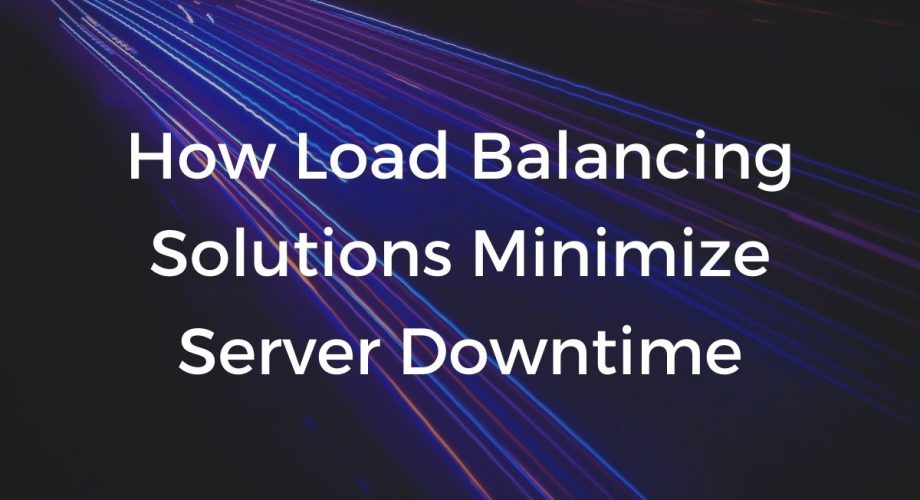If you surf the web on a daily basis, you also connect to a web server. This server then triggers a load balancer to disperse incoming requests between various servers and link you to that server until you click out of the website. Does this mean every website requires a load balancer? Not exactly. Load balancing solutions become necessary when a single server can no longer handle the capacity of connections and processing requirements simultaneously. As your business grows, you’re going to want to be able to keep up with new visitors. That might mean using a load balancer.
How a Load Balancer Helps
If you’re experiencing a lot of downtime or service disruptions, it might be because your initial web design can no longer grow beyond its inherent capacity. If such is the case, server load balancing allows you to increase the number of clients you can serve at a single moment and provides redundancy should you experience a server failure.
Your Load Balancing Setup
There are a few things you need to take note of when considering a specific load balancing setup. This includes whether or not the servers you’re currently employing have the same capabilities. Your setup might also depend on whether each of your visitors originates from unique IP addresses or from a single NATd IP. Another thing you want to ask yourself is whether you already have a traffic baseline or not. Finally, pay attention to when your gateways make application calls to the application server (APP server) tier or whether the APP server tier links up with the database (DB) itself. Note that DBs are load-balanced using a specific clustering functionality.
Different Load Balancing Design Models
Some web servers are simple, whereas others, such as web-based applications, will require a gateway, application server, and database. Simple servers are single-level and might have tiered web-facing applications. They might act as a collection of servers behind a single load balancer or a high-availability pair that serves the same content. Sometimes, application codes are run locally, fetching from the same server or local storage. Simple servers are best intended for internal business applications that employees use daily.
On the other hand, web-based applications have web servers behind load balancers that makes calls to an APP server based on your actions on a form. From a database, APP servers fetch data that is returned to a gateway, which returns the data to your computer screen. This model is multi-tiered and scalable, making it ideal for Internet-facing applications that expect a lot of connections. It ensures that data is not stored on an Internet-exposed server.
Software Load Balancing Solutions
Load balancers have dozens of other additional features and functionalities but can actually be quite simple and straightforward. They are primarily responsible for taking health readings in order to determine where to direct a certain request. By using a load balancing algorithm, it then decides what type of criteria it’ll use to keep you on that server until you end your session.
Achieve Scalability with Load Balancing
As with any new project, scaling your business means having to keep up with it as well as you did when it began. As your website gathers more visitors, you’re going to need more resources to ensure that it functions just as well as it does with fewer visitors.
Reliable Load Balancing Solutions with Resonate
At Resonate, we provide load balancing solutions that serve intelligent applications and networks. Seeking a solution? Call us up today!

